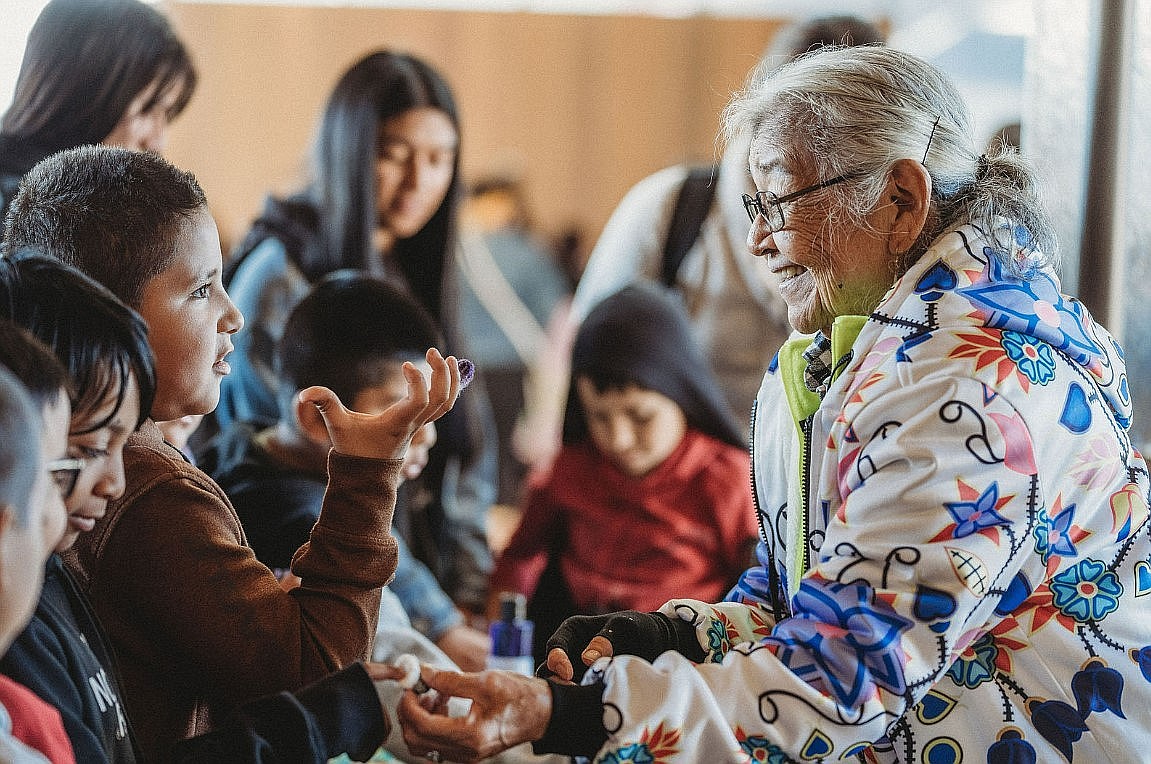The Warrior stands
MATTAWA — To the Wanapum, residents of Mattawa and the Wahluke School District, the Wahluke Warrior is a symbol of a longstanding and valuable relationship, one that goes beyond the school.
Alyssa Buck of the Wanapum Interface Office said the ties between the Wanapum, the WSD and the town of Mattawa go back decades.
“The school district has been consulting with the Wanapum. They were, I guess, collaborating with the Wanapum before the warrior was even selected. The Wanapum leader(ship) had a big part in that,” Buck said.
Whether or not the district could retain the use of the Warrior became a subject of conversation with the passage of HB 1356 by the Washington Legislature in 2021. The bill prohibited the use of Native American imagery or language in public schools in an inappropriate manner. School districts and other government entities could request permission to continue using Native American images and terms.
“The language in HB 1356 identifies that the nearest (federally recognized) tribe must give approval,” Buck said.
For the Wahluke School District the nearest federally recognized tribal givernment is the Confederated Bands and Tribes of the Yakama Nation, though the Wanapum were directly involved in the initial selection of the Warrior to represent the district.
Kenny Mathias, a Wanapum member who works with the tribal language program, said the Wanapum are not recognized by the federal government – though they are by the state of Washington.
As a result, the language of HB 1356 effectively directed the school district to petition the Yakama for permission to continue using the Warrior mascot.
Elese Washines, Yakama Nation higher education and adult vocational program manager, said Yakama council members reviewed all the WSD Warrior imagery and names and gave their approval for the continued use of what they considered appropriate. Some were inappropriate and the Yakama requested that those be changed, she said.
“The Warrior image actually comes from the Wanapum people,” she said. “It embraces the ideal, the respectful way of being a warrior.”
Wahluke High School principal Cody Marlowe said WHS opened in 1986, and the Wanapum people were an important part of the discussion around the selection of a symbol.
Alyssa Buck said the elders wanted the image to be more than an expression of school spirit.
“Granting the use of a warrior as representation for the school and identifying what the warrior would mean for the school. Granting that approval, it wasn’t the typical warrior that went out to battle. It was more of an image that every person at the school could identify with. A leader, a community caretaker, somebody that was humble and hardworking,” she said. “And I think that really set the foundation for a really good working relationship between the Wanapum and the school district.”
District officials then held an art contest to determine what the image would look like.
“I think a really interesting piece of the history is the image you see today was actually created by high school students, one being a Wanapum member and the other a longtime resident,” Alyssa Buck said.
According to a video on the WSD website, the artists were Tobias Tapia and Harry Buck.
“The school district wanted to work with the Wanapum,” Alyssa Buck said. “(The Mattawa area) was a lot smaller then, so the relationships were a lot closer and dependent upon each other. It was a way to acknowledge their neighbors.”
“The ones that stayed here, post-construction at (the) Priest Rapids and Wanapum (dams), as well as the farmers at that time, are the ones who wanted to honor the people of this land, and recognize the people here,” Mathias said.
Wanapum members and district officials worked together on a presentation to the Yakama Nation council, explaining the history of the Warrior image and why both groups wanted to retain it.
“The school district gave it with the Wanapum input and support, just highlighting all the years of collaboration and consultation on ensuring there was accurate curriculum and telling of the history and living culture of the Wanapum,” Buck said. “The Yakama were very impressed with that.”
“Wahluke’ itself is part of the language,” Washines said.
The term means ‘to rise up, Mathias said, though it is also an actual location.
Some Wahluke School District buildings are built on land considered to be part of Wahluke, he said.
Washines said the process has been valuable in strengthening relationships between all the parties involved, and WSD Superintendent Andy Harlow agreed.
“I believe, in the end, if we weren’t there before, we certainly have made a commitment to be closer to the Wanapum,” he said.
Alyssa Buck said the process has served to highlight what the Warrior represents and its importance to the whole Mattawa area.
“I would say the Warrior image is very connected to the community of Mattawa, and it represents the past, the present and definitely the future,” she said. “Because the Wanapum are very committed to making sure that the Warrior image is upheld and respected, and the school district is the same, I believe. It’s our identity, really, for not just indigenous students but all of the students that attend here.”
Cheryl Schweizer can be reached via email at education@columbiabasinherald.com.





